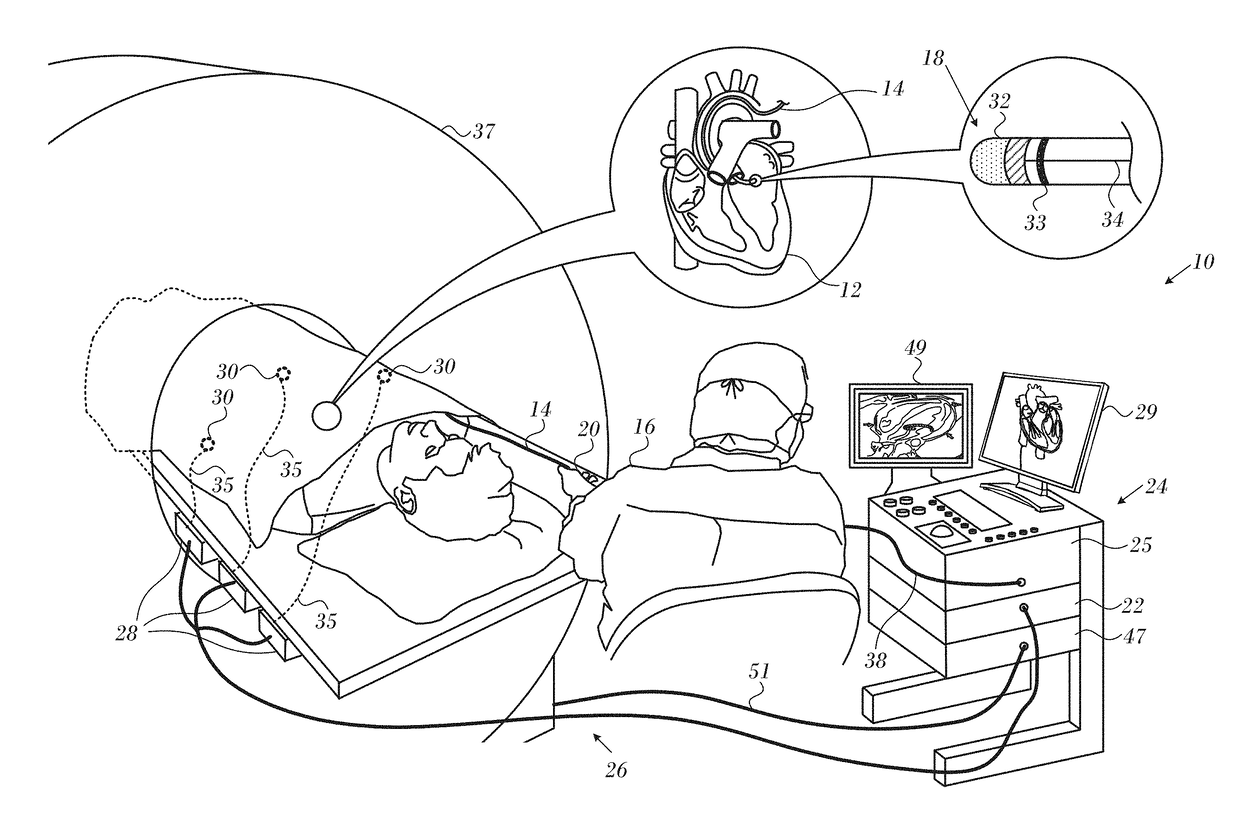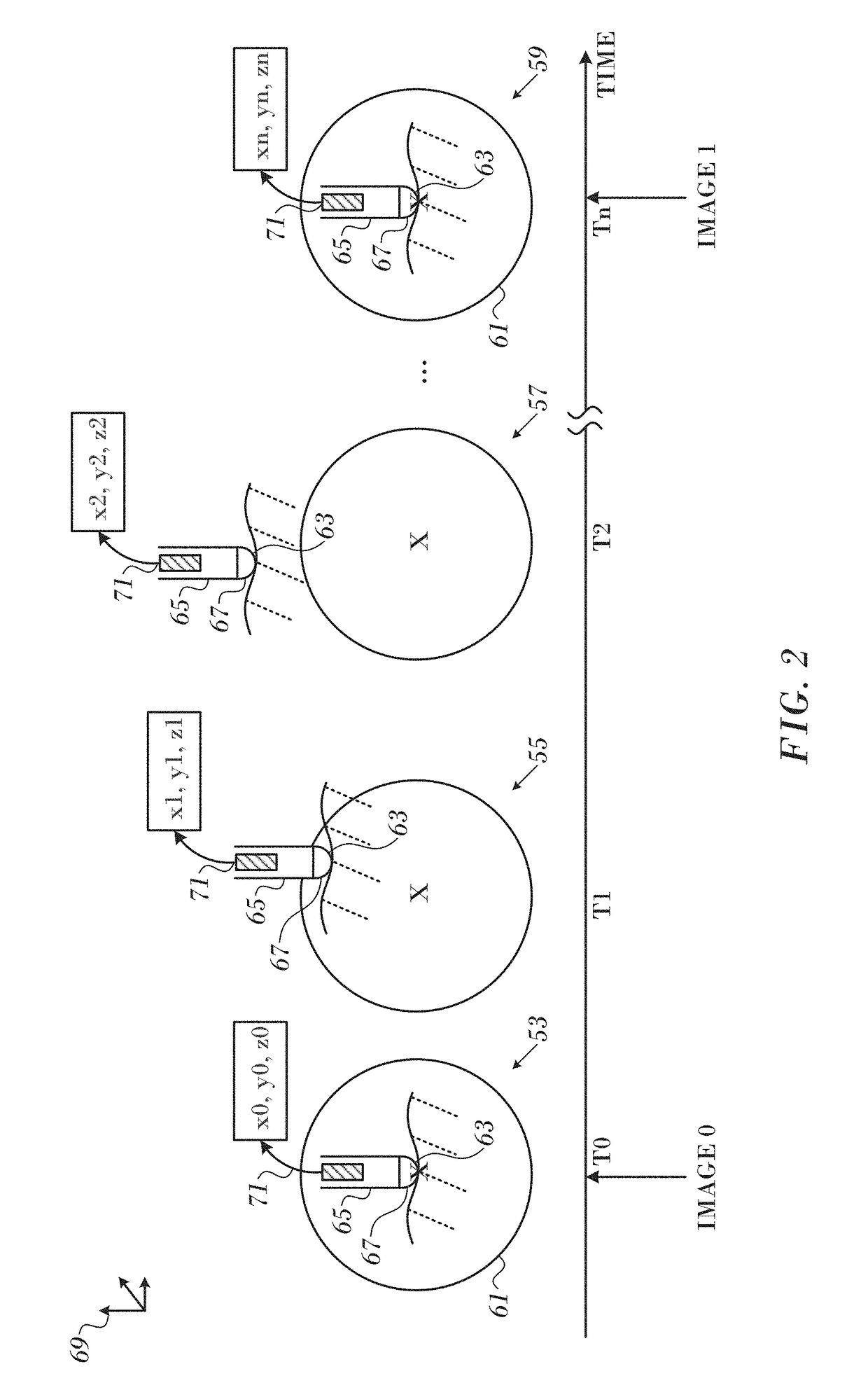Magnetic resonance thermometry during ablation
- Summary
- Abstract
- Description
- Claims
- Application Information
AI Technical Summary
Benefits of technology
Problems solved by technology
Method used
Image
Examples
example
[0061]Reference is now made to FIG. 4, which is a composite diagram comprising two MRI thermography images 91, 93 showing typical results in a prospective cardiac ablation procedure in accordance with an embodiment of the invention. An increase in temperature 95 at ablation site 97 is noted in the later image 93, compared to temperature 99 in the earlier image 91. The operator can react to the measured temperatures 95, 99 by adjusting the power and / or duration of the ablation procedure as is known in the art.
[0062]Reference is now made to FIG. 5, which is a collection of two MRI images 101, 103 that are suitable for MRI thermography according to an embodiment of the invention. The images 101, 103 were obtained from data acquired in one slice in accordance with an embodiment of the invention. Images 101, 103 are an amplitude and a phase image, respectively. Ablation site 105 is indicated on both images.
PUM
 Login to View More
Login to View More Abstract
Description
Claims
Application Information
 Login to View More
Login to View More - R&D
- Intellectual Property
- Life Sciences
- Materials
- Tech Scout
- Unparalleled Data Quality
- Higher Quality Content
- 60% Fewer Hallucinations
Browse by: Latest US Patents, China's latest patents, Technical Efficacy Thesaurus, Application Domain, Technology Topic, Popular Technical Reports.
© 2025 PatSnap. All rights reserved.Legal|Privacy policy|Modern Slavery Act Transparency Statement|Sitemap|About US| Contact US: help@patsnap.com



